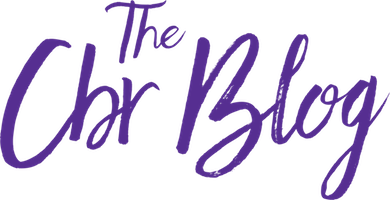What does the future of newborn stem cells and regenerative medicine look like? Could stem cell therapies one day reduce the need for prescription drugs?
We sat down with our expert, Heather Brown, Vice President of Clinical Innovation at CBR, for her take on the future of newborn stem cells and their place in regenerative medicine.
This is one seriously exciting interview you don’t want to miss!
Q: Why did you get involved in the newborn stem cell space? Why is this work personal for you?
HB: As a certified genetic counselor, I spent many years working with families with children who have genetic conditions that have no cure. And the more I learned about newborn stem cells, the more I realized their potential in treating not only genetic diseases, but other kinds of serious conditions as well.
Joining the team at CBR allowed me to educate expecting families and health care providers about the benefits of newborn stem cells on a large scale rather than one individual at a time.
Q: How could newborn stem cells potentially revolutionize the way medicine is practiced?
HB: In lots of ways. Stem cells will provide a vehicle for treatments for diseases that currently lack therapeutic options. They could also help treat diseases in different ways than prescription drugs, because while prescriptions only treat the symptoms of a condition, stem cells can help treat the root causes of conditions.
It is not inconceivable that one day newborn stem cells could reduce the need for prescription drugs for certain conditions.
Q: In your opinion, what are some of the most exciting advancements in newborn stem cell science over the last two decades?
HB: Regenerative medicine, definitely.
Researching the potential use of cord blood for conditions outside of transplants originally began because scientists saw that pediatric patients who had a cord blood transplant for certain inherited metabolic disorders had a decrease in neurological deterioration associated with the disorder after they were infused with cord blood.
This was exciting, because it opened the doors to potentially using newborn stem cells from other sources, like the mesenchymal stem cells (MSCs) found in cord tissue.
Unlike hematopoietic stem cell (HSC) transplants (which help rebuild blood and immune systems), MSCs are being researched in regenerative medicine for their ability to exert a therapeutic benefit through something called paracrine signaling, through which cells can communicate with and influence each other.
Q: Where are we at with clinical trials in regenerative medicine?
HB: Between 2005 and 2015, more than 280 clinical trials were registered worldwide to study regenerative medicine. Within the United States, researchers began pilot and clinical trials studying conditions like cerebral palsy, autism spectrum disorder, and acquired hearing loss.
The use of newborn stem cells in regenerative medicine applications looks poised to increase the number of clinical settings in which they can be considered as part of a therapeutic intervention.
Q: Where do you see regenerative medicine heading in the next two decades?
HB: With advancements in regenerative medicine, and a widening spectrum of conditions in which newborn stem cells may be used, cord blood banks are starting to provide biological source material for advanced applications like immunotherapy, which works by activating or suppressing the immune system (depending on the condition).
For example, regulatory T cells from cord blood could be used to treat autoimmune conditions like Type 1 diabetes. Also, NK (natural killer) cells and CAR-T cells have anti-tumor effects, and could one day help treat cancer.
Q: What might a future state look like, in concrete terms? For example, if someone were diagnosed with diabetes, could a specialist use stem cells to stimulate their body to regulate insulin production on its own, without the need of insulin shots?
HB: There has been huge progress in how cells (in particular, immune cells rather than stem cells) found in cord blood might be used in autoimmune conditions.
In patients with Type 1 diabetes, a group of cells in the immune system called T effector cells attack the insulin-producing cells of the pancreas.
One interesting approach to treating the underlying cause of Type 1 diabetes being explored in clinical trials is to try and restore the balance that normally exists between the T effector cells and T regulatory cells. (This is the part of the immune system responsible for regulating other cells in the immune system.)
This idea was groundbreaking. Since then, this approach has been explored in a clinical trial setting for Type 1 diabetes. The same approach could conceivably be applied to other autoimmune conditions, too.
Thank you for your time!
As always, we’ll keep you posted as the science moves forward. Keep on the lookout for our next article, and don’t forget to share with friends and family!
Heather Brown, MS, CGC
Vice President, Clinical Innovation
Heather Brown has been with CBR since 2001 and has more than 20 years of clinical and business experience in the healthcare and biotech industries. Heather is a licensed and board certified genetic counselor with extensive experience in prenatal, pediatric, and cancer genetics. Heather has led a number of new business development and healthcare marketing initiatives during her tenure at CBR. In her current role, Heather is primarily responsible for research partnerships and medical education. Heather holds a B.A. and M.S. in Health and Medical Sciences from the University of California at Berkeley.


